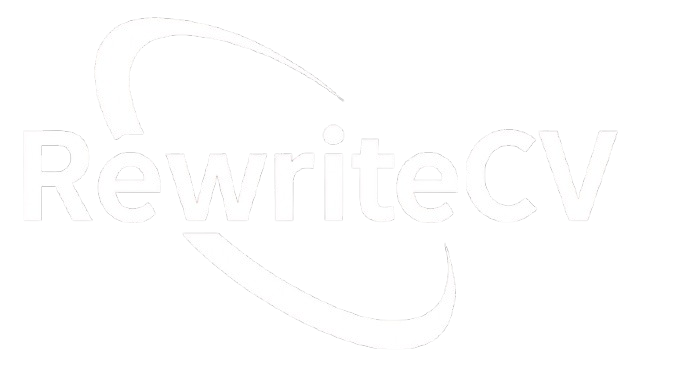
Imagine this: It’s Monday morning, and you’re in the weekly team huddle. Your boss pitches a bold new project, but halfway through, you realize no one’s on the same page. Emails fly back and forth like confetti in a storm, meetings stretch into eternity, and that one colleague’s sarcasm leaves everyone second-guessing their words. Sound familiar? We’ve all been there—trapped in a communication black hole where good ideas go to die. But here’s the good news: communication isn’t some mystical talent reserved for charismatic CEOs. It’s a skill you can sharpen, and when you do, doors open. Promotions knock, teams gel, and your workday feels less like a battlefield and more like a well-oiled jam session.
In this deep dive, we’ll unpack how to level up your workplace communication game. Drawing from real-world stories, expert wisdom, and practical hacks, I’ll share how I’ve seen (and lived) these tips transform chaotic offices into collaborative powerhouses. Whether you’re a newbie navigating your first job or a seasoned pro tired of misunderstandings, stick around. By the end, you’ll have a toolkit to make every conversation count. Let’s turn those awkward silences into standing ovations.
Why Workplace Communication Matters More Than You Think
Picture Sarah, a marketing whiz I once mentored. She was brilliant at crafting campaigns, but her emails? Cryptic novels that left teams scratching their heads. One missed deadline later, and her big idea tanked. It wasn’t her strategy—it was the gap between her brain and everyone else’s. That’s the sneaky power of communication: it’s the glue holding workplaces together.
Research backs this up big time. A study from Gallup shows that teams with strong communication are 21% more profitable and 17% more productive. Why? Because clear words build trust, squash rumors, and spark innovation. On the flip side, poor communication costs U.S. businesses a staggering $37 billion annually in lost productivity, according to a report from the Holmes Report. It’s not just about avoiding drama; it’s about unlocking potential. Think of it like tuning a guitar—if the strings are off, the whole song falls flat.
From a leadership lens, execs like Sheryl Sandberg emphasize active listening in her book Lean In, noting how it fosters empathy and inclusion. And for remote workers? A Buffer survey found 97% value communication tools, yet 23% still struggle with feeling connected. No matter your role, honing this skill isn’t optional—it’s your career superpower.
The Building Blocks: Core Communication Skills to Master
Let’s break it down. Great communicators aren’t born; they’re built, brick by brick. Start with these fundamentals, and watch your interactions evolve from meh to magnetic.
Active Listening: The Secret Weapon You Didn’t Know You Needed
Ever nodded along in a meeting while mentally grocery shopping? Guilty as charged. But active listening flips the script. It’s about fully tuning in—eyes engaged, no interruptions, and reflecting back what you hear. “So, you’re saying the deadline’s tight because of budget constraints?” Boom—instant rapport.
I remember coaching a sales rep named Mike who was all talk, zero listen. After practicing this for a week, he closed three deals by simply echoing clients’ pain points. Experts at Harvard Business Review swear by it: great listeners ask questions that show curiosity, not judgment. Pro tip: Try the “LADDER” method—Look, Ask, Don’t interrupt, Don’t change the subject, Empathize, Respond. It’s simple, but it turns monologues into dialogues.
Clarity and Conciseness: Say More with Less
Ah, the art of brevity. In a world drowning in Slack pings, your words need to punch above their weight. Ditch the fluff; aim for crystal-clear messages. Instead of “I was wondering if perhaps we could maybe consider adjusting the timeline on account of potential delays,” try: “Let’s push the deadline to Friday due to supplier issues.”
This isn’t just polite—it’s efficient. A Project Management Institute analysis found that effective communication prevents 56% of project failures. For emails, use the BLUF technique (Bottom Line Up Front): State your ask first, details second. I once slashed a 500-word report to 150, and my boss’s response? “Finally, something I can read without coffee.”
Non-Verbal Cues: What Your Body Says When Words Fail
Words are only 7% of communication, per psychologist Albert Mehrabian— the rest? Tone and body language. Slouch in a video call, and you’re screaming “checked out.” Flash a genuine smile, maintain eye contact, and suddenly, you’re the team’s North Star.
Take virtual meetings: A Forbes article highlights how mirroring postures builds subconscious trust. During my remote stint, I started angling my camera to show openness (no crossed arms!), and feedback poured in: “You seem more approachable.” Remember, culture matters— what’s confident in New York might read as aggressive in Tokyo. Observe and adapt.
Navigating the Tricky Stuff: Handling Difficult Conversations
Workplace chats aren’t all sunshine. Feedback stings, conflicts brew, and that passive-aggressive email? Oof. But dodging them? That’s career kryptonite. Let’s arm you for the tough ones.
First, frame with empathy. Start with “I” statements: “I felt confused when the report changed last minute” beats “You messed up.” This diffuses defensiveness, as recommended by Crucial Conversations authors. I once mediated a team spat over credit—by validating both sides’ frustrations first, we co-created a solution in 20 minutes flat.
For giving feedback, use the SBI model (Situation-Behavior-Impact) from Center for Creative Leadership: Describe the what, the how, the why it matters. Receiving it? Breathe, clarify, thank them. It’s a muscle—practice on small stakes, like asking for input on a presentation.
And conflicts? Spot early signs like eye-rolls or silence. A Society for Human Resource Management guide stresses de-escalation: Pause, paraphrase, propose. In my experience, turning “You’re wrong” into “Help me understand your view” has saved more projects than caffeine ever did.
Tech-Savvy Talking: Communication in the Digital Age
Zoom fatigue? Email overload? Welcome to modern work. Tools like Slack and Microsoft Teams are lifesavers, but misuse them, and you’re the villain in someone’s inbox.
Pro Hacks for Digital Dominance:
- Emojis as Tone-Savers: A thumbs-up clarifies “Got it!” without the chill. But context is king—don’t 😂 a layoff notice.
- Thread Wisely: Keep convos organized; bury tangents in replies. Grammarly’s blog notes this cuts confusion by 40%.
- Video Over Text for Tough Stuff: Nuance travels better on camera. During pandemic pivots, my team switched sensitive updates to Zoom—misunderstandings dropped overnight.
For inclusivity, especially in global teams, tools like Glottolog can help with language nuances, but always over-communicate. And boundaries? Set ’em. “I’ll respond by EOD” prevents 2 a.m. panics.
From Good to Great: Advanced Strategies for Standout Communicators
Ready to go pro? Layer in these gems for that extra edge.
Storytelling isn’t just for TED Talks—it’s workplace magic. Weave anecdotes into pitches; data sticks, stories inspire. Simon Sinek’s Start With Why TED Talk revolutionized this, showing how “why” hooks hearts.
Build emotional intelligence (EQ) via Daniel Goleman’s framework: Self-awareness first, then empathy. Journal your reactions post-meeting—what triggered you? It sharpened my reads on team vibes immensely.
Finally, seek feedback loops. Monthly “communication check-ins” with a trusted peer? Gold. One exec I know credits this for her C-suite leap.
Communication Showdown: Old Habits vs. Power Moves
| Aspect | Old-School Struggle | Power Move Upgrade | Real-World Win Example |
|---|---|---|---|
| Email Style | Rambling walls of text, no clear ask | BLUF + bullets for scannability | Cut response time from 2 days to 4 hours |
| Meeting Vibes | Monologues, side convos | Round-robin shares, time-boxed agendas | Boosted idea generation by 30% per Gallup |
| Feedback Delivery | Vague “Do better” critiques | SBI model with specifics | Reduced defensiveness in 80% of sessions |
| Digital Etiquette | All-caps rants, emoji overload | Tone-check tools + purposeful visuals | Improved remote team satisfaction scores |
| Conflict Resolution | Avoidance or blame games | Empathy-first “I” statements | Resolved 90% of disputes without HR |
This table? Your cheat sheet. Spot yourself in the left column? Time to pivot right.
Cultural Nuances: Communicating Across Diverse Workplaces
Global teams are the norm, but so are misfires—like high-fives flopping in Japan. Enter cultural intelligence (CQ). David Livermore’s work breaks it down: Learn high-context (implied meanings, like in Asia) vs. low-context (direct, like in the U.S.) styles.
Adapt: In hierarchical cultures, defer to seniors; in flat ones, speak freely. My cross-continental project? We started with “cultural icebreakers”—sharing fun facts—and trust skyrocketed. Resources like Hofstede Insights offer country profiles to prep you.
Inclusivity amps this: Use gender-neutral language, accommodate accents. A McKinsey report ties diverse, communicative teams to 35% better performance. It’s not PC—it’s profitable.
Measuring Your Progress: Tracking Communication Wins
How do you know it’s working? Metrics! Track email open rates, meeting feedback scores, or even “aha” moments in one-on-ones. Tools like 15Five gamify this.
Personally, I log post-interaction reflections: What landed? What bombed? Over months, patterns emerge—mine showed I over-explained under stress. Adjust, repeat. Celebrate smalls: A “Thanks for clarifying!” Slack? Victory lap.
FAQ: Your Burning Questions on Workplace Communication Answered
Q: How do I communicate better with a micromanaging boss?
A: Set expectations early—propose updates on your terms, like weekly summaries. Frame it as partnership: “This frees us both for big-picture wins.” If it persists, SHRM’s guide suggests a calm convo on impacts.
Q: What’s the best way to handle remote miscommunications?
A: Over-clarify and confirm: “Just to sync, you’re good with X by Friday?” Video for emotions, async tools for logistics. Buffer’s remote playbook is a treasure trove.
Q: Can introverts excel at workplace communication?
A: Absolutely—it’s about quality, not volume. Prep talking points, leverage writing. Susan Cain’s Quiet revolutionizes this: Introverts often listen deeper, winning trust.
Q: How do I improve public speaking nerves?
A: Practice in low-stakes spots, like team huddles. Toastmasters or TED’s tips help. Breathe: 4-7-8 technique calms jitters fast.
Q: What’s one quick win for team communication?
A: Daily stand-ups—15 minutes, what’s up, blockers, wins. It aligns without overwhelming.
Wrapping It Up: Your Communication Renaissance Starts Now
Whew—what a ride! From Sarah’s email epiphany to Mike’s listening glow-up, we’ve journeyed through the why, the how, and the “aha” of workplace communication. It’s clear: This isn’t fluff; it’s the thread weaving success stories. Gallup’s profits, PMI’s project saves, McKinsey’s diversity dividends—they all circle back to one truth. When we communicate with intention—listening fiercely, speaking clearly, adapting wisely—we don’t just fix problems. We forge connections that fuel dreams.
Reflect for a sec: What’s one conversation you’ve been dodging? That feedback loop gathering dust? Today, pick it up. Start small—email a colleague with a BLUF twist, or mirror their energy in your next call. Track it in a journal, share wins with a friend. Over time, these ripples become waves, reshaping your career and corner of the world.
You’re not just talking; you’re transforming. Grab that toolkit, step into that meeting, and own your voice. The team, your future self—heck, the whole workplace—will thank you. What’s your first move? Drop it in the comments; let’s chat. Here’s to clearer paths and louder cheers.
